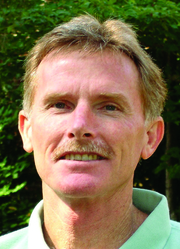Walter “Bubba” Hubbard After graduating from Mississippi State University with a M.S. degree in Fisheries Management, Bubba began his career as a fisheries biologist with the Mississippi Department of Wildlife, Fisheries and Parks (MDWFP) in 1981. It was during these early years with MDWFP that Bubba worked closely with C.A. Schultz on the developing fisheries associated with the construction of the Tennessee-Tombigbee Waterway (TTW). C.A.’s influence on Bubba was apparent early on, as Bubba’s passion for understanding stream fisheries along the TTW grew, particularly Gulf Coast strain walleye. Bubba’s next move within MDWFP brought him to the main office in 1993, where he supervised MDWFP’s two state fish hatcheries and the agency’s boat ramp/ fishing pier construction crew. During this time, Bubba “broadened” his experience by gaining knowledge in fish culture and public access development. His final move with MDWFP was in 2003, when he was appointed Assistant Director of the Bureau of Fisheries, a position he held until his retirement in 2007. During his time as Assistant Director, Bubba administered the Federal Assistance in Sportfish Restoration Program and directed statewide fishery management and research programs. Since his retirement with MDWFP, Bubba has continued his passion to improve the quality of life for others through natural resource management in his current position as the Director of the Strawberry Plains Audubon Center for the National Audubon Society. Throughout his career, Bubba has been very supportive of the American Fisheries Society and the state chapter, having served as an officer and committee member at the state level. He also worked closely with the MS chapter in establishing criteria for the C.A. Schultz Conservation Award. Involvement with other conservation organizations was also important to Bubba. A good example of his commitment to the management and conservation of aquatic resources was his participation with the Southeast Aquatic Resources Partnership, a group whose mission is to “protect, conserve and restore aquatic resources including habitats throughout the Southeast for the continuing benefit, use and enjoyment of the American people.” His contribution in the early stages of the formation of this fish habitat partnership was critical, as he served as the co-chair of the Habitat Committee. Bubba’s work included a diversity of habitats, as evident by the broad range of publications he either authored or co-authored. He published research conducted on both reservoirs and streams, wrote several articles for popular magazines, and wrote numerous agency management reports, including a 1984 report he co-authored with C.A. He was also acknowledged by Dr. S.T. Ross for reviewing the entire manuscript and providing significant comments to the “Fisheries” sections of the species accounts in Ross’ Inland Fishes of Mississippi.

-
Chapter Info
-
Meetings & Archives
If
you have questions or suggestions concerning this site, please Dr. Kevin M
Hunt.
This page was last modified:
This page was last modified:
